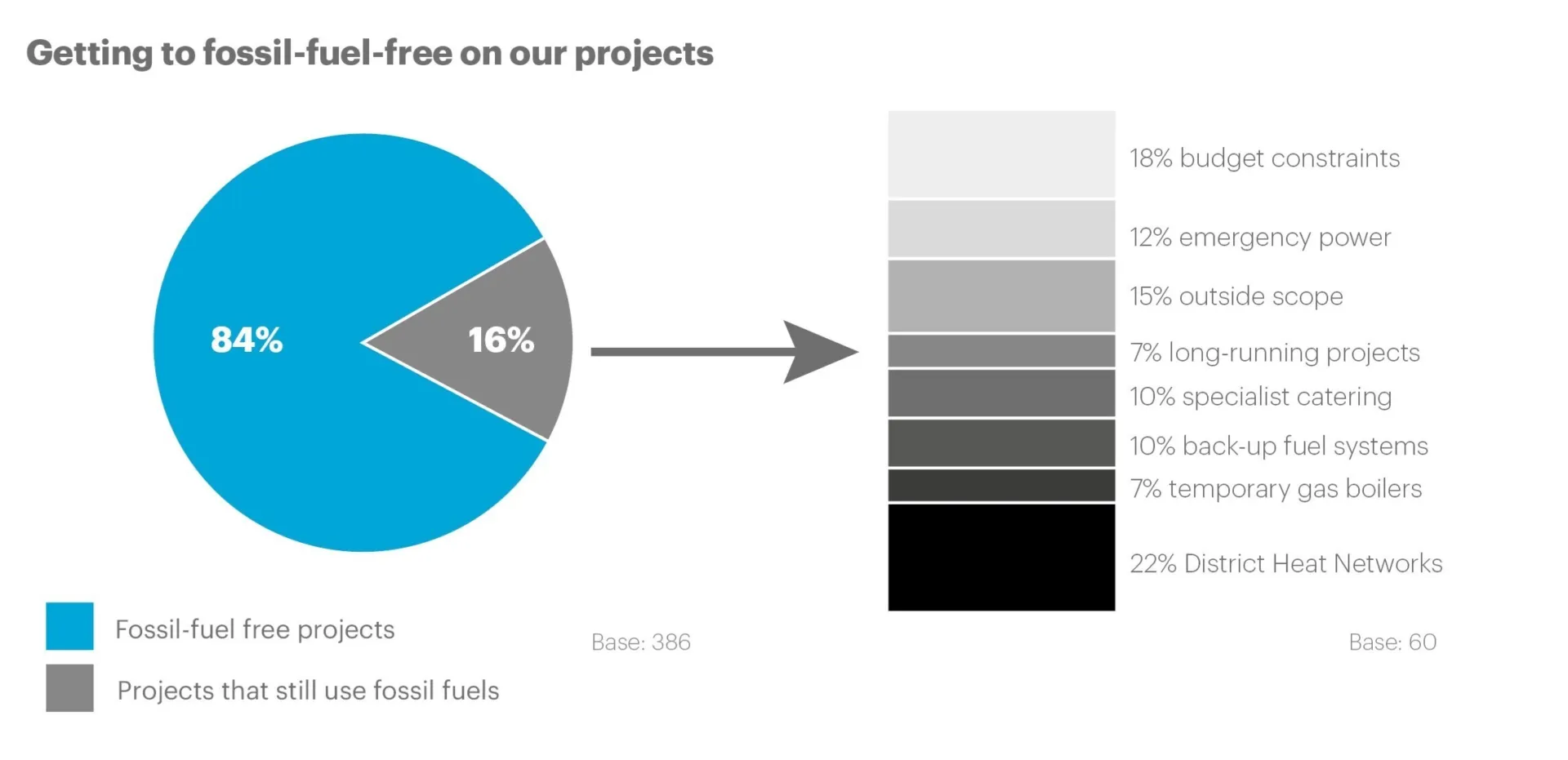Beyond Net Zero: Raising the bar on our projects

Holding ourselves to account
“Beautiful engineering for a sustainable future” is the tagline on our website. Sustainability, we say, is at the heart of everything we do as a practice, but words on a webpage are meaningless unless they’re backed up by projects that perform in reality. So designing net zero carbon buildings is what we do by default, and we’ve committed to giving all our engineers and consultants the skills and knowledge they need to design all our projects to be fully compatible with a net zero carbon future.
Our in-house team of Net Zero Carbon Champions are the driving force behind this commitment. Looking, as always, beyond the traditional ‘pipes and wires’ of MEP engineering, they identify the barriers to designing truly net zero carbon buildings, explore ways to overcome them, and share what they’ve learned. They also hold us to account on our projects using our own Beyond Net Zero metrics. We have started to collect this as-designed performance data on all our projects, to enable us to set a baseline, review our progress and improve the environmental impact of our buildings.
2024: focus on fossil-fuel-free
After a thorough review in 2024, we established that 84% of our current projects are fossil-fuel-free. Of the remaining 16%, 35 projects were either connected to a fossil-fuel-based District Heating Network, used fossil fuels for emergency power, catering, or specialist equipment, or had a main plant beyond our scope. On each of these projects, we questioned the use of fossil fuels regardless. Four projects were relying on fossil fuels until a future phase permitted heat pump installation, and four projects had been designed at a time when planning pushed for a Combined Heat and Power (CHP) plant. Eleven projects had budgetary limitations, and the remaining six used gas boilers as a back-up for heat pumps.
Image

We are working towards being fossil fuel-free on all of our projects. On projects where fossil fuels are still being used due to special circumstances, we questioned their use regardless.
©Max Fordham LLP
Lessons learned:
- Question the use of fossil fuels with clients, with an emphasis on the decarbonising electricity grid and the real possibility of stranded assets.
- Look for the most cost-effective MEP designs when budgets are limited, even on projects where gas boilers are used as back-ups for heat pumps.
The Max Fordham Beyond Net Zero metrics we use to track our progress:
- Use of Fossil Fuels
- Operational Energy (EUI)
- Peak Electricity Demand
- Peak Heating Delivered
- Renewable Energy Generation
- Potable Water Use
- Reuse of Materials
- Upfront and Embodied Carbon
- Biodiversity Net Gain
Text
This article is part of our Beyond Net Zero whitepaper, which we launched in April. The whitepaper is a series of short insight articles and project case studies and is an encapsulation of what we believe as a practice, a summary of what we see as the state of the net-zero nation, and a statement of our intent.
Text
Top image: One of London's most sustainable buildings, 11 Belgrave Road, meets the highest sustainability and wellbeing credentials. The building is all-electric and hosts 320m2 of photovoltaic panels on its roof. It is the first project in the UK to achieve a NABERS UK 5.5* design-reviewed target rating for in-use energy efficiency.
